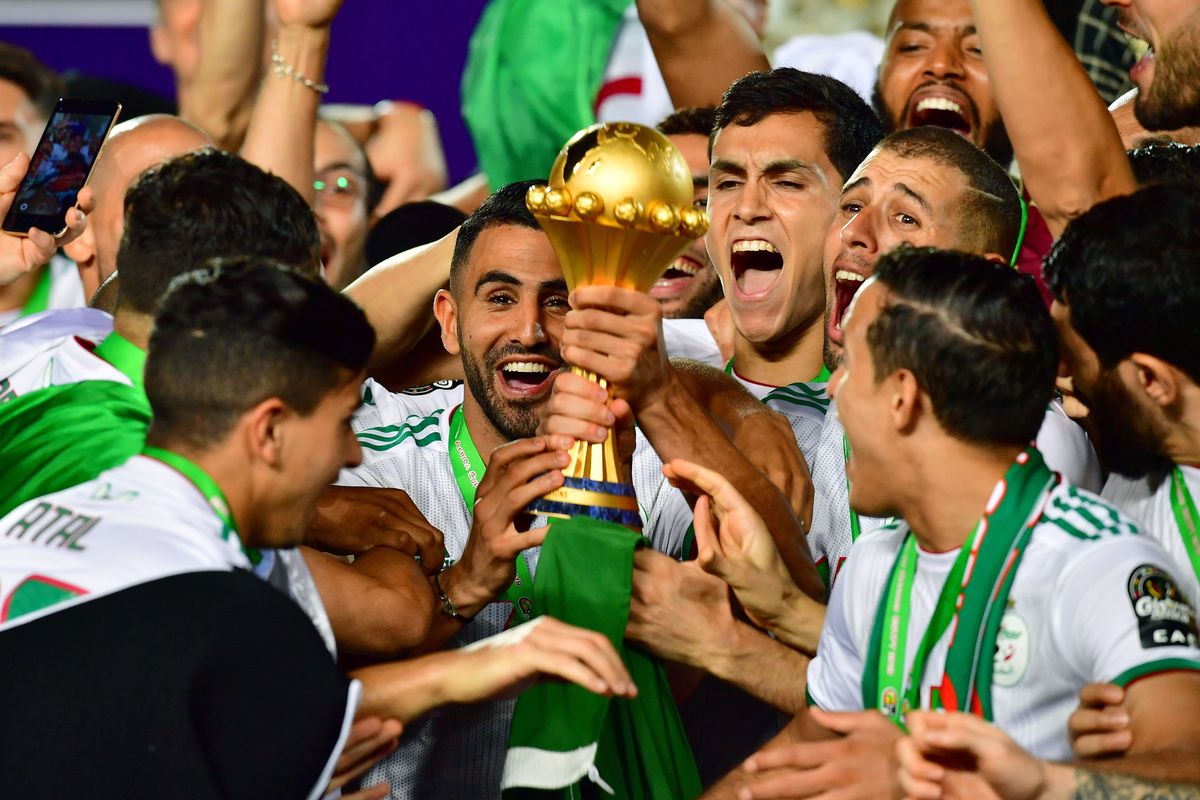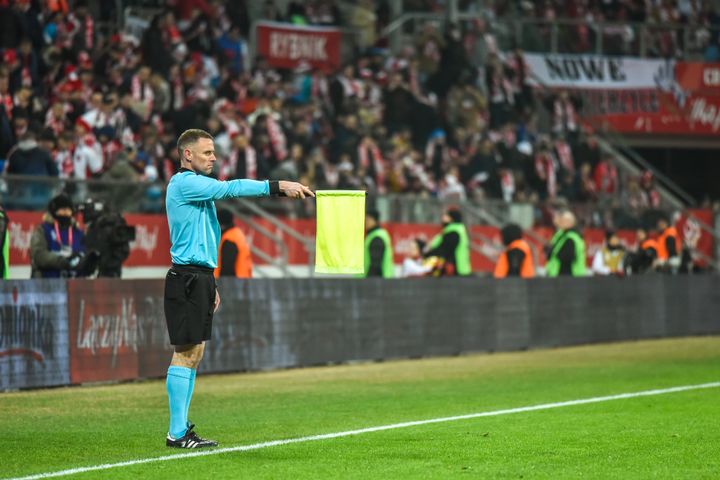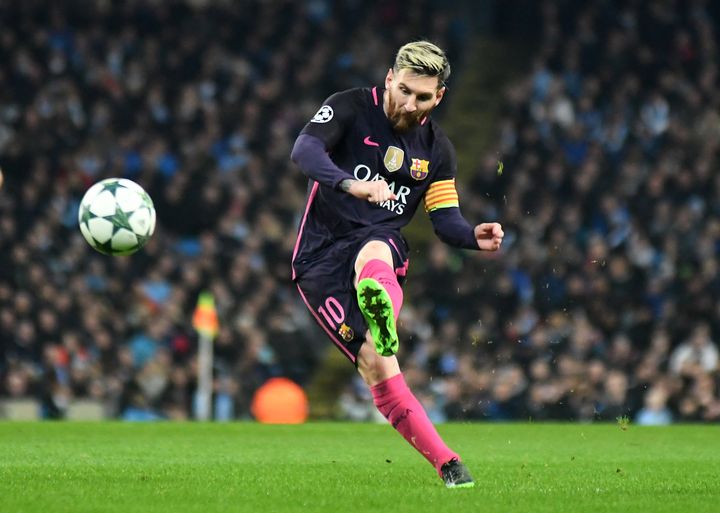The Stellar Six: An Exploration of the Most Prestigious Trophies in International Football
In professional soccer one can win many trophies. In this article we highlight five of the most important soccer trophies for national teams.

In the vast international football arena, few accolades stir up more passion, unity, and national pride than the gleaming trophies awarded to victorious national teams. These coveted prizes symbolize not just the triumph of skill and strategy but also the fulfillment of dreams shared by both the players on the pitch and the millions of fans watching from afar. Across the globe, there are countless soccer competitions for national teams, but a select few stand above the rest in terms of prestige, history, and global impact.
This article delves into international soccer, spotlighting the six most significant trophies every soccer player dreams of lifting.
FIFA World Cup
The FIFA World Cup, the world's premier soccer tournament, represents the zenith of international soccer competition. Its history is a rich tapestry of legendary players, unforgettable matches, and powerful stories that have shaped the course of the sport.
The inaugural tournament was held in 1930 in Uruguay, involving just 13 teams, including seven from South America, four from Europe, and two from North America. The host nation, Uruguay, triumphed in this tournament, marking the beginning of a new era in soccer.
Jules Rimet, the third president of FIFA, created the competition to promote international cooperation and showcase the best soccer talent globally. The competition's original trophy was named the Jules Rimet Trophy in his honor.
However, the World Cup’s progression wasn't always smooth. It faced a 12-year hiatus due to World War II, after which it resumed in 1946. Over time, the tournament expanded to include more teams and evolved into the month-long spectacle we know today. By 1998, the World Cup had grown to 32 teams, and FIFA has announced further expansion to 48 teams starting with the 2026 World Cup.
Over the decades, the World Cup has produced countless unforgettable moments. From England's sole triumph on home soil in 1966, Argentina's Diego Maradona's infamous "Hand of God" goal in 1986, to Brazil's record-breaking five titles, the World Cup’s history is laced with drama, excitement, and heartbreak.
The World Cup has always been more than just a sports competition. It's a global event that transcends borders and cultural differences, uniting people around a common passion for soccer. It can ignite national pride, create heroes, and sometimes even influence political and social landscapes.
The tournament has seen its share of controversies and challenges, including accusations of corruption within FIFA and concerns about the massive costs borne by host nations. However, these issues have not diminished the World Cup's universal appeal. It remains the most-watched sporting event in the world, with the final match of the 2022 World Cup attracting more than 1.5 billion viewers.
Moreover, the World Cup is a platform for technological innovation and social change. Over the years, it has embraced advancements like goal-line technology and the Video Assistant Referee (VAR) system to ensure fair play. It has also become a vehicle for social change, promoting anti-discrimination, environmental sustainability, and economic development.
In essence, the FIFA World Cup is not merely a soccer tournament; it's a celebration of the sport that stirs the global community every four years. Its history mirrors the evolution of soccer, reflecting the game’s growth, challenges, and enduring appeal. The World Cup embodies the joy, despair, triumph, and defeat that soccer offers, making it an unparalleled spectacle in sports.
Euros
The UEFA European Football Championship, more commonly known as Euro, is one of the most prestigious tournaments in the international soccer calendar. Since its inception in 1960, the Union of European Football Associations (UEFA) has organized the championship, which takes place every four years.
The idea of a pan-European soccer tournament was first proposed by French Football Federation's secretary-general, Henri Delaunay, in 1927, but it wasn't until 1960, three years after his death, that his dream came to fruition with the first tournament, fittingly held in France. The original trophy was named in his honor.
The initial tournaments had a limited number of teams, with only four teams competing in the final tournament stage. However, the competition's popularity grew, leading to an expansion in the number of participating teams to eight in 1980, 16 in 1996, and 24 in 2016, reflecting the rising standard and competitiveness of European soccer.
The Euro has been a stage for legendary teams and players to showcase their skills and write their names into the annals of soccer history. Teams like the Netherlands in 1988, inspired by Ruud Gullit and Marco van Basten, and Spain's victorious teams in 2008 and 2012, have left indelible marks with their attractive play styles and dominance. Iconic players like Michel Platini, Franz Beckenbauer, Cristiano Ronaldo, and many others have shone in this tournament, bolstering their reputations as some of the greatest players the sport has ever seen.
The competition's format involves a qualification phase, where teams from all over Europe compete to secure a spot in the final tournament. This phase itself produces numerous memorable matches and moments, adding to the anticipation and excitement surrounding the event.
Throughout its history, the Euro has provided many dramatic moments, from the Soviet Union's inaugural victory in 1960, Denmark's unexpected win in 1992 after being included as a last-minute replacement, to Greece's surprise triumph in 2004, defying all the odds. These narratives highlight the unpredictability of the sport and enhance the tournament's appeal.
Over time, the Euro has gained global attention, with its matches attracting millions of viewers worldwide. The tournament often features high-quality soccer due to the relative strength of European nations in the global soccer landscape. In many ways, the Euros are seen as equally competitive, if not more so, than the World Cup due to the density of European powerhouse teams.
Copa America
The Copa América, one of the world's oldest and most prestigious soccer tournaments, traces its origins back to 1916. It has become an integral part of the international soccer calendar, showcasing the vibrancy and competitiveness of South American soccer.
The Argentine Football Association organized the first edition to celebrate the centenary of Argentina's independence. Featuring Argentina, Brazil, Chile, and Uruguay, the inaugural competition took place in Buenos Aires. Uruguay emerged as the first champion, marking the beginning of a rich soccer tradition.
Unlike other international soccer tournaments that follow a strict four-year cycle, Copa América initially didn't have a fixed schedule. It was played irregularly during the early years and even faced hiatus periods. However, since 2000, it has adhered to a quadrennial schedule, with a few exceptions, bringing it in line with other major international tournaments.
The competition was originally known as the South American Football Championship ("Campeonato Sudamericano de Fútbol" in Spanish) until 1975 when it was renamed the Copa América. Initially, only South American nations participated, but since the 1990s, teams from North and Central America and even Asia have been invited to compete, reflecting the tournament's international stature.
Regarding prestige, the Copa América stands as the main soccer competition among South American nations. It provides an opportunity for teams to assert their regional dominance and for players to etch their names in soccer history. Legends like Pelé, Zico, Maradona, and Messi have graced the tournament with their skills, bolstering its reputation as a crucible for world-class talent.
Uruguay holds the record for the most victories, with Argentina and Brazil closely following. These three nations have been powerhouses in South American soccer, with their rivalries adding to the Copa América's allure. Matches like Argentina vs. Brazil and Uruguay vs. Brazil are among the world's fiercest, filled with passion and intensity, a testament to the competitive spirit of the tournament.
Despite its historical importance and exciting soccer, the Copa América has also faced challenges. These range from organizational issues, political interference, and, more recently, pandemic-related concerns. Yet it has continually adapted, providing memorable soccer moments and championing the South American soccer spirit.
Over the years, the tournament has expanded in size and scope. The latest editions have featured twelve teams, including ten from South America and two guest nations. This expansion has brought additional dynamism and variety to the competition, reinforcing its global appeal.
The Copa América embodies the passion, flair, and drama that South American soccer is renowned for. Its history is interwoven with the region's soccer narrative, marking significant eras, players, and matches that have shaped the soccer world. It symbolizes a celebration of soccer culture, offering a spectacle of skill, tenacity, and rivalry that captivates fans worldwide.
Africa Cup of Nations
The Africa Cup of Nations (AFCON), organized by the Confederation of African Football (CAF), is the premier international soccer tournament in Africa. Since its inception in 1957, it has been a vibrant celebration of African soccer, encapsulating the continent's passion for the sport.
The idea for the AFCON emerged in the early 1950s when a few African nations decided to create a continental competition to foster unity and cooperation through soccer. The inaugural tournament occurred in 1957 with only three participating teams: Egypt, Sudan, and Ethiopia. Egypt emerged as the first champion, marking the beginning of an event that would grow to become a crucial part of Africa's sporting identity.
In its initial years, the tournament faced challenges due to financial constraints and limited infrastructure. However, the passion for soccer in Africa and the dedication of the CAF ensured that the tournament survived and grew. By 1968, the competition had expanded to include eight teams, and by 1996, it had increased to 16.
The AFCON has a rich history of thrilling matches, legendary players, and unexpected outcomes. Teams like Egypt, Cameroon, and Nigeria have left an indelible mark on the tournament. Egypt holds the record for the most victories, with their teams often setting the standard for soccer in Africa.
The tournament has also allowed African soccer players to make their mark. Legendary players such as Samuel Eto'o, Didier Drogba, Roger Milla, and Yaya Touré have all graced the AFCON with their presence, showcasing their talent and leaving lasting legacies.
However, the AFCON has not been without its challenges. From political unrest and infrastructural issues to health crises, the tournament has sometimes been a reflection of the difficulties faced by the continent. Yet, it has continually showcased resilience, mirroring the spirit of its people, and remained a beacon of unity and celebration amid adversity.
Traditionally held every two years, the AFCON has also been a stage for cultural expression, with each edition reflecting the unique cultural heritage of its host nation. The tournament brings together diverse African cultures, promoting unity and mutual respect.
Moreover, the AFCON plays a crucial role in developing soccer in Africa. The tournament stimulates growth at the grassroots level, promotes local talent, and inspires younger generations to take up the sport. It also contributes significantly to the economies of the host nations, often leading to improvements in infrastructure and increased global recognition.
CONCACAF Gold Cup
The CONCACAF Gold Cup is the principal soccer competition for national teams in North America, Central America, and the Caribbean. Organized by the Confederation of North, Central American, and Caribbean Association Football (CONCACAF), the tournament reflects the region's sporting diversity and competitive spirit.
The Gold Cup's origins can be traced back to 1963 when the inaugural CONCACAF Championship took place. This tournament, a precursor to the Gold Cup, was held every two years, showcasing the best soccer nations across the CONCACAF region. However, it wasn't until 1991 that the competition was rebranded as the Gold Cup, giving birth to the tournament as we know it today.
Since its inception, the Gold Cup has seen growth and evolution in its format. The tournament began with just eight teams but expanded to twelve in 2000 and later to sixteen in 2019, reflecting the growing stature and competitive balance of soccer in the region.
The United States and Mexico have been dominant forces in the Gold Cup, with Mexico boasting the most titles. These two powerhouses have produced iconic players such as Landon Donovan, Clint Dempsey, Cuauhtémoc Blanco, and Javier Hernandez, who have dazzled fans with their performances in the tournament.
Nevertheless, the tournament has also seen its share of surprises and underdog triumphs. The victory of Canada in 2000 stands out as a classic example, showcasing that the Gold Cup is not just a two-horse race.
The Gold Cup is more than just a platform for competitive soccer; it's a unifying event that brings together diverse cultures. Given the region's broad geographic span, the tournament reflects a rich blend of North American, Central American, and Caribbean soccer styles and traditions, contributing to its unique charm.
However, like any major tournament, the Gold Cup has faced challenges. The disparity in soccer development among the participating nations has sometimes resulted in lopsided matches. Also, the tournament has grappled with issues related to scheduling and stadium availability. Yet, despite these challenges, the Gold Cup's importance to the region's soccer cannot be overstated.
The tournament plays a vital role in raising the standard of soccer in the CONCACAF region. It provides valuable experience for teams and players, stimulates interest in soccer, and often leads to infrastructure and grassroots development. Additionally, it offers a global platform for players to showcase their talents, potentially earning moves to prestigious clubs worldwide.
AFC Asian Cup
The AFC Asian Cup, organized by the Asian Football Confederation (AFC), is the premier soccer competition in Asia. It celebrates the continent's diverse soccer cultures, unifying countries from the Middle East to East Asia through their shared passion for the sport.
The tournament was inaugurated in 1956, and the first edition was held in Hong Kong with just four teams: South Korea, Israel, South Vietnam, and Hong Kong. South Korea emerged as the inaugural champions, setting the stage for a competition that would evolve into the foremost soccer tournament in Asia.
During the early years, the tournament took place at irregular intervals, and participation was limited. However, the AFC Asian Cup has gradually expanded its structure and regularity. The tournament includes 24 teams and is held every four years, reflecting the growth and rising standard of soccer in Asia.
The AFC Asian Cup has provided a platform for legendary players and teams to shine. Countries like Japan, Saudi Arabia, and Iran frequently dominate the competition. Particularly noteworthy is Japan, which holds the record for the most titles.
The tournament has also been instrumental in developing the careers of many Asian soccer stars. Players such as Ali Daei, Sami Al-Jaber, and Keisuke Honda graced the tournament with their skills, leaving an indelible mark on Asian soccer.
Over the years, the AFC Asian Cup has produced numerous memorable moments that embody the spirit of Asian soccer. From South Korea's inaugural victory in 1956 to Iraq's emotional triumph in 2007 amidst their nation's turmoil, these narratives have shaped the tournament's identity and enhanced its appeal.
The AFC Asian Cup is not just about the competition; it's a cultural festival that brings together diverse countries with distinct cultural heritages. Each tournament showcases the host nation's culture, contributing to greater understanding and mutual respect among the nations of Asia.
However, like any major tournament, the Asian Cup has had its share of challenges. Political tensions, logistical difficulties, and varying levels of soccer development across the continent have sometimes posed obstacles. Nevertheless, the tournament has shown resilience, continually adapting and growing.
Importantly, the AFC Asian Cup contributes to developing soccer in Asia. The tournament has encouraged investment in soccer infrastructure, talent development and has raised the standard of refereeing and coaching across the continent. It has also heightened the global visibility of Asian soccer, with many players using the platform to earn moves to major soccer leagues worldwide.




